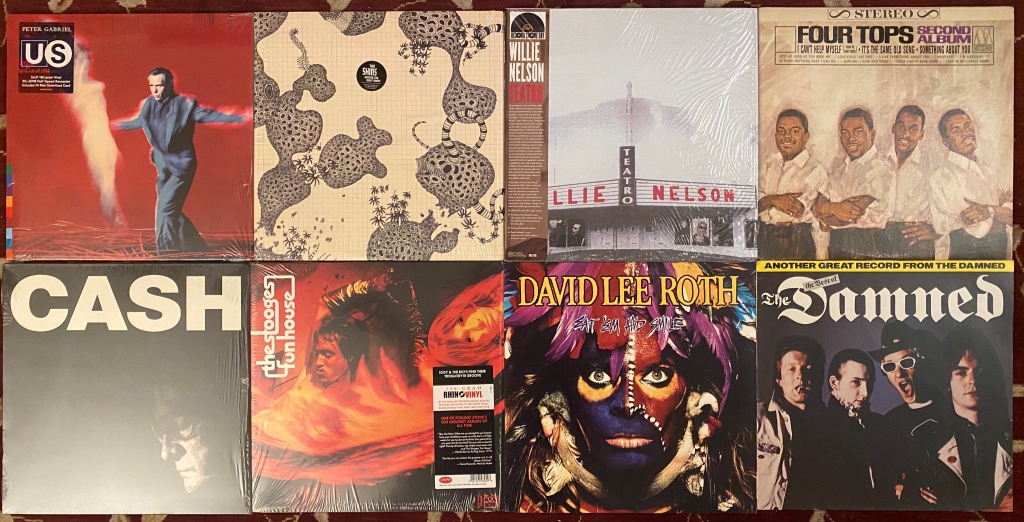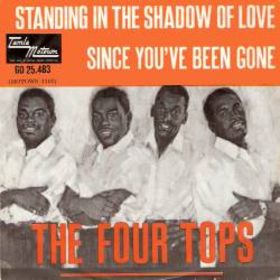
By Joel Francis
Stay strong and stay safe, my friends.
Johnny Cash – American IV: The Man Comes Around (2002) The final Johnny Cash album released in Johnny Cash’s lifetime is appropriately fixated on mortality. Then again, Cash has been singing about death since he shot a man in Reno to watch him die. The album works more often than it doesn’t. The title song is one of my favorite Cash compositions, funneling the Book of Revelations through a strummy Martin guitar. Similarly, Cash turns Depeche Mode’s “Personal Jesus” into a gospel song. He adds a layer of guilt and gravitas to Sting’s “I Hung My Head” that is absent from the original recording. Best of all, Cash infuses a lifetime of pain and addiction into “Hurt,” completely claiming the song from Nine Inch Nails. Most of the rest ranges from fine to worse. “Tear-Stained Letter” is too jaunty and “Desperado” and “Danny Boy” are unnecessary. Cash isn’t adding anything to those well-worn tunes. Even worse, are covers of “Bridge Over Troubled Water” (with Fiona Apple) and “In My Life.” Surprisingly, Cash seems lost on these songs, unsure of what to do with them. The high points more than make up for the milquetoast material – there is usually a little filler on Cash albums, but the result is the least consistent of the American releases to that point.
David Lee Roth – Eat ‘Em and Smile (1986) Diamond Dave is looking to settle scores with his solo debut. He brought in hotshot guitarist Steve Vai and bass player Billy Sheehan to generate one of the highest notes-per-second rock albums in an era that celebrated six-string excess. For better or worse, Roth can’t help being anything other than himself so even this grudge match was delivered with a broad wink and jazz hands. The key word in the album’s title is SMILE. All the songs push the fun factor to 11, but surprisingly nothing feels forced. Of course it’s all junk food, but like getting the extra butter on movie theater popcorn, sometimes you just can’t help it.
Four Tops – Second Album (1965) More often than not, especially in the 1960s, Motown albums were collections of hit singles padded with other recordings. The result was often uneven, but the album tracks on Second Album are pretty great in their own regard. No one can argue with the three Top 10 hits on the first side: “I Can’t Help Myself (Sugar Pie, Honey Bunch),” “It’s the Same Old Song” and “Something About You.” The second side doesn’t contain any hit singles but doesn’t suffer from it. “Darling, I Hum Our Song” has a great Levi Stubbs vocal performance (really, he’s great on everything here) in a Jackie Wilson-styled song from the period when Berry Gordy was writing hits for Wilson. “Since You’ve Been Gone” first appeared as the b-side of “Standing in the Shadows of Love.” The energy from Four Tops and the Funk Brothers on this track make me think it could have been a hit on its own. Back on the first side, “IS There Anything I Can Do” is one of the few songs on the album not to come from the pen of Brian Holland, Lamont Dozier and Eddie Holland. Written by Smokey Robinson and fellow Miracles Ronald White and Pete Moore, it’s not hard to imagine the Miracles performing this song. Surprisingly, as far as I know they never did. Come for the hits on Second Album but stay for the album tracks that illustrate just how special the Four Tops were.
The Damned – The Best of the Damned (compilation) It seems there are almost as many best-of collections for the Damned as there has been lineups. I picked this up at a garage sale because it has many of my favorite songs from their first three albums, back when they were more punk than goth. At some point I might expand my Damned album collection to include those early releases in their entirety, but until then this is a great overview of a tough band.
The Stooges – Fun House (1970) The hype sticker on my album proclaims “Iggy and the boys find their troglodyte groove.” I wholeheartedly agree with this sentiment. The music on Fun House connects on a primal level, like howling at the moon. In a strange way, it connects with me in the same way as Howlin Wolf or John Lee Hooker – straight in the gut, without any pretense. Like it is hitting the lowest rung of Maslow’s hierarchy of needs (food, shelter, etc.) In other words, the exact opposite of a pompous album review that references Maslow’s hierarchy of needs. The song “TV Eye” came from a phrase that Stooges rhythm section Scott and Ron Asheton’s sister used about men leering at her. It forces me to exceed the speed limit every time it comes on in the car. “Down in the Sleep” came to Iggy Pop in the middle of the night. He got out of bed trying to play the power chord he heard in his head, waking his wife in the process. Unlike Ziggy, Iggy didn’t play guitar. Perhaps he never found that chord.
After the opening assault, Fun House changes up a bit but remains just as gripping. Steven Mackay’s saxophone squonks across the second side like the group has just discovered fire for the first time.
This album needs to be played regularly to make sure you are still alive.
The Shins – Wincing the Night Away (2007) The third album from the Albuquerque indie rock quartet was their first release after Natalie Portman proclaimed them life-changing in the film Garden State. There was a lot riding on this release, but frontman and songwriter James Mercer wasn’t afraid to stretch the band’s sound. He sprinkles synthesizers and funk basslines among the familiar chiming guitars and la-la-la melodies. As a result, Wincing the Night Away isn’t as strong as the two Shins albums before it, but it is still very enjoyable.
Willie Nelson – Teatro (1998) Willie Nelson seems game to try just about anything. Reggae album? Sure. Duet with Kid Rock? Why not? Still, the decision to record in an old movie theater with producer Daniel Lanois was a solid nod. Nelson revisits several of his lesser-known songs from the 1960s with harmonica player Mickey Raphael and the marvelous Emmylou Harris on backing vocals. Many of the arrangements are Spanish or Mexican in spirit and give a vibe like we are lost in a marathon of Ennio Morricone films south of the border. Nelson, the other musicians and the songs thrive in this atmosphere, making this a distinctly unique album in Nelson’s vast catalog and also one of his best.
Peter Gabriel – Us (1992) It took Peter Gabriel six years to release a follow-up to his massively successful album So. That’s almost light speed, considering he’s only given us one other album of original material since then. But what an album Us is. Gabriel throws everything from bagpipes to a Russian folk group in the should-have-been-single “Come Talk to Me.” Other songs are just as overstuffed and immaculately excellent. The horn-driven “Kiss the Frog” ranks as one of the greatest extended sexual metaphors of all time. “Blood of Eden” and “Secret World” are passionately romantic. The only dud is “Steam,” aka Son of “Sledgehammer.” There is a lot to unravel in Us, but Gabriel gave his fans plenty of time to process all of it.









